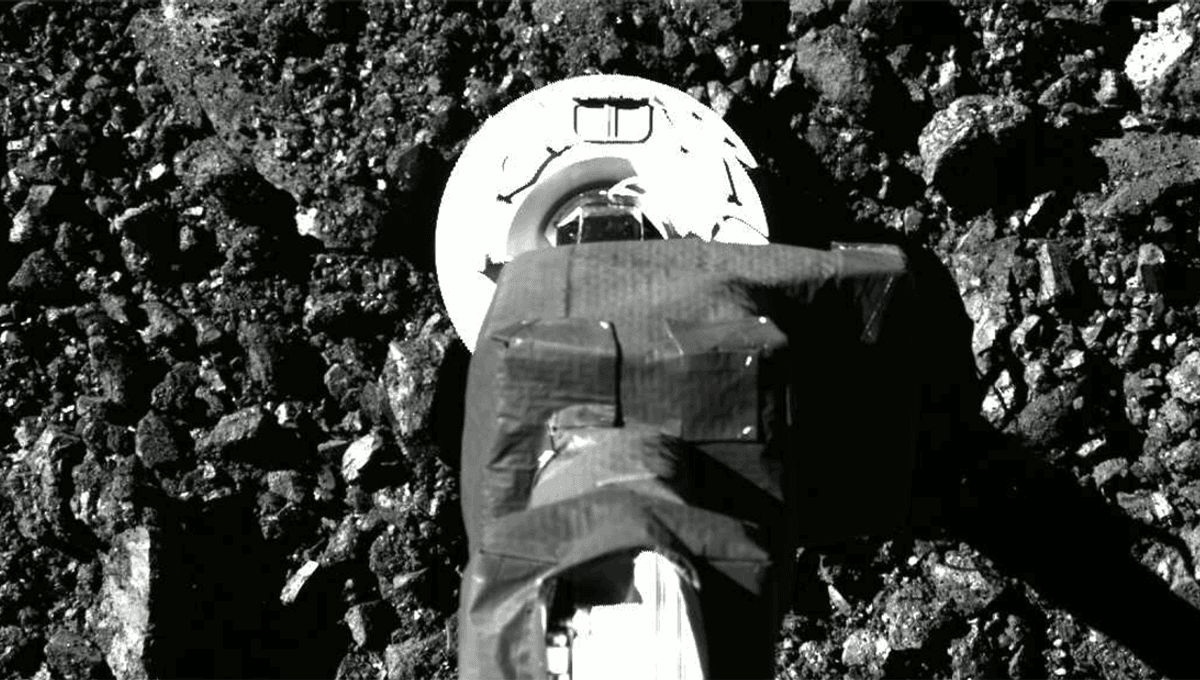
When you are firing a spacecraft at an asteroid, touching the spacecraft down on that asteroid very briefly to collect a sample, and then returning the sample to Earth, there are a lot of opportunities for problems.
Despite the difficulty of the task, NASA successfully returned a sample of asteroid Bennu to Earth in late September. Since then, scientists have begun to open the sample, a long, slow, and delicate process, which the team has spent months rehearsing.
Inside, they have hit a problem, slowing down the process even further.
How the sample was collected. Doesn’t look easy, does it?
When they removed the outer lid of the capsule, they found “black dust and debris” coating the lid and the Touch-and-Go Sample Acquisition Mechanism (TAGSAM). A lot of it.
“The very best ‘problem’ to have is that there is so much material, it’s taking longer than we expected to collect it,” deputy OSIRIS-REx curation lead Christopher Snead said in a statement. “There’s a lot of abundant material outside the TAGSAM head that’s interesting in its own right. It’s really spectacular to have all that material there.”
An abundance of material is, of course, a good thing for the mission, even if it takes a little longer to collect and analyze. The samples will now be analyzed in a variety of ways, including with a scanning electron microscope, infrared measurements, and x-ray diffraction, according to NASA.
“We have all the microanalytical techniques that we can throw at this to really, really tear it apart,” Lindsay Keller, an OSIRIS-REx sample analysis team member, added. “Almost down to the atomic scale.”
[H/T: BGR]
Source Link: NASA Finds "The Very Best Problem" When Opening Up Bennu Sample